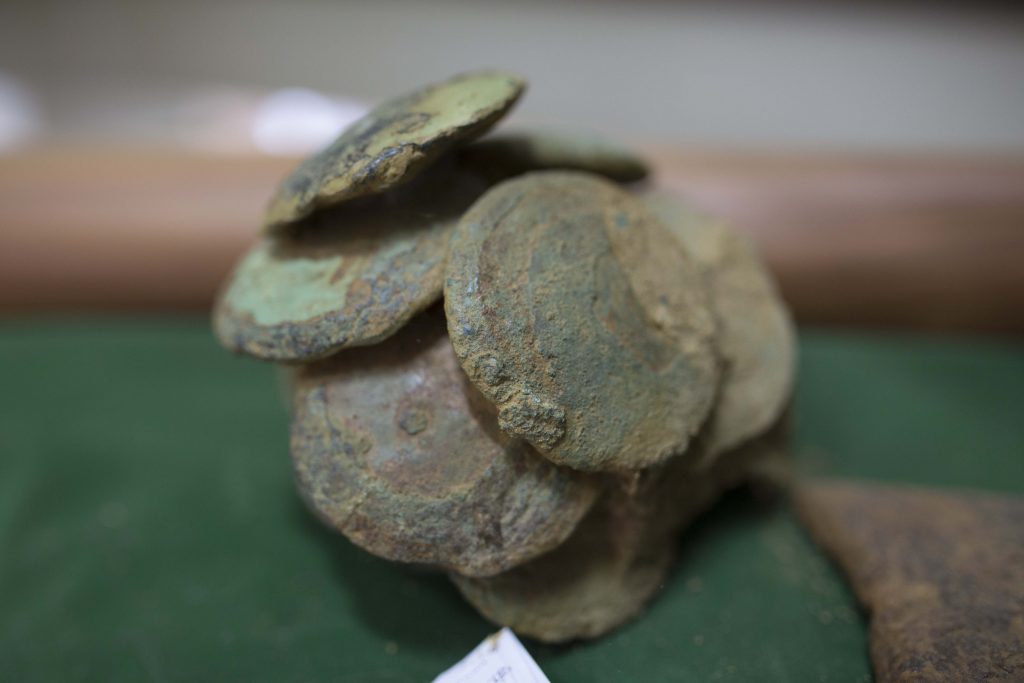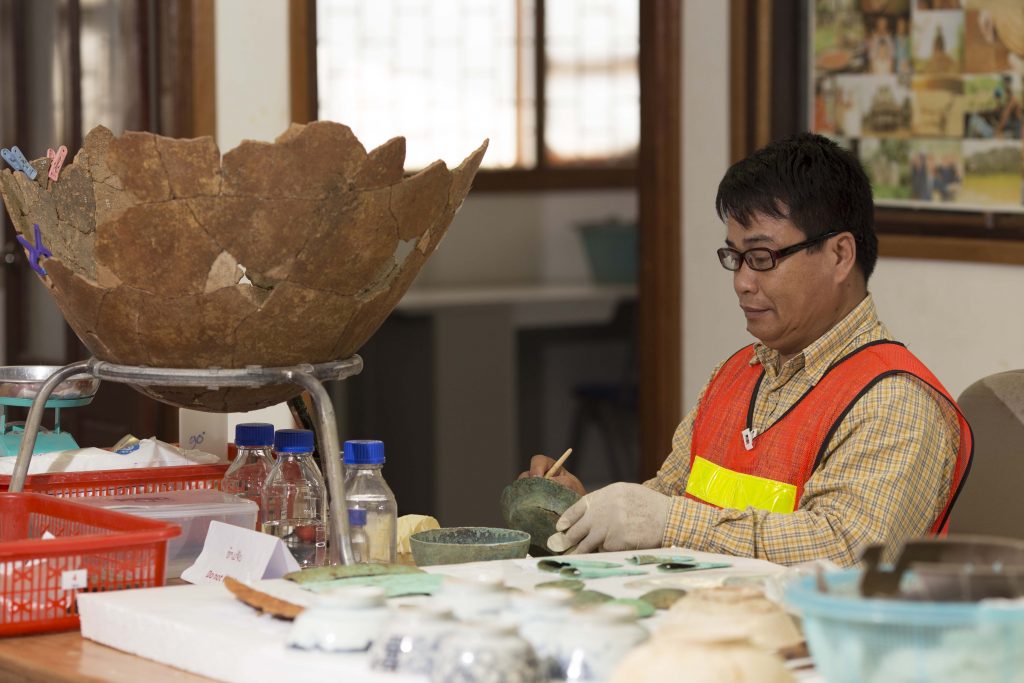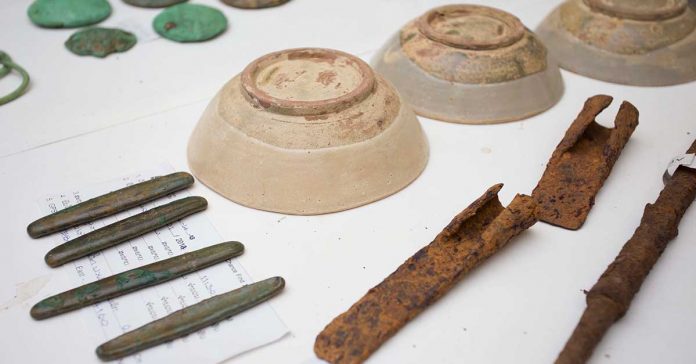Today, Lane Xang Minerals Limited Sepon (LXML) handed over more than 7,800 artifacts to the Lao Government. These artifacts – made up of copper, bronze, chalcedony (regular gems), ceramic, wood among others – have been discovered on site at Sepon mine. This is an outcome from LXML’s decade-long support to the Lao Government in archaeological research and cultural heritage preservation.
On behalf of LXML, Mr Saman Aneka – Managing Director handed the artefacts to Ms Vanpheng Keopanya – Director of the Lao National Museum; Mr Nalathiveth Ammalathithada – Director of Savannakhet Museum and Ms Touythong Keovongsa – Head of Vilabouly Information, Culture and Tourism Office under the honourable witness of Mr Bouageun Saphouvong – Vice Minister of Information, Culture and Tourism; Mr Khamphoune Touphaythoune – Vice Governor of Savannakhet Province and concerned officials from central, provincial, and district level.
After the handover, these artifacts will be showcased at the Lao National Museum (828 items handed), the Savannakhet Museum (409 items handed), and the Vilabouly Cultural Hall (6,644 items handed).

“Implementation of the MoU has led to a remarkable outcome reflecting the extensive effort and ownership of all those involved” said Mr Bouageun Saphouvong, Vice Minister of Information, Culture and Tourism. “Apart from the ancient artefacts discovered throughout the technical processes, compliance to related laws and regulations, and procedures of LXML; we’ve also gained significant scientific historical and cultural evidence that reflects ancient political and socio-economic governance especially how the industrial and commerce sector was governed back then at a local, national and regional level.”
Since 2008, LXML has invested over US$1.3 million in supporting 3,000 years of Lao history and heritage through our archaeological research with the Department of Heritage (DoH) of the Ministry of Information, Culture and Tourism, the National University of Laos, and James Cook University of Australia. The program sponsors fieldwork that unites a unique community at local, national and international levels. Volunteers from Vientiane, local villagers, Australian and Lao students, archaeologists and Lao officials from the DoH stationed at Sepon mine cooperate closely together to conduct research.

Remarkable discoveries of artefacts and heritage sites have been made at the Sepon mine in the Vilabouly District, Savannakhet Province. In March 2018, the team of archaeologist discovered evidence of more than 200 antic mine shafts dating back over 3,000 years ago. This means Vilabouly district is considered one of the first mining and metallurgy areas in Southeast Asia. We believe ancient mining around Sepon mine continued to about 1,300 years ago (700 AD) where people have excavated the rich copper ore then refined it in the so- called Peun Baolo and Thong Na-Gneuak (Dragon Field) locations and exchanged minerals and metals since then. These dates have been confirmed from the examination of bamboo matting found in the mentioned well-preserved ancient mine-shaft support structures laid in the compacted wet clay just below the surface (10 to 40 meters deep).

Other artefacts unearthed include mining equipment such as wooden ladders, pulleys, mallets, painted bamboo baskets, and rope made from lianas; a large ‘Dong Son’ bronze era drum currently on display at the National Museum in Vientiane; and crucibles, copper ingots, jewellery, ceremonial items and other artefacts highlighting Laos’ pivotal place in regional history.
“While the handover today marks a significant milestone of our partnership in historical and cultural heritage preservation, it is not the end.” said Mr Saman Aneka, LXML Managing Director. “LXML stands committed to continue providing support and to work hand in hand with our Government counterpart and academia for at least another 10 years until mine closure.”
Mining has been essential in the development of civilisation and society throughout history. Excavations will continue and we look forward to reveal more exciting discoveries about Lao culture and history.
This story provided by Lane Xang Minerals Ltd.



